It was not so many years ago that it would have been impossible for an American to ride a motorcycle around Poland. From 1939 to 1989 it was controlled first by Nazi Germany and then by the Soviet Union. Both have since faded into history, and today Poland is a member of the European Union. It’s about the size of New Mexico, bordered by Germany on the west, and five countries––Lithuania, Belarus, Ukraine, Slovakia, and the Czech Republic––that used to be part of the USSR on the south and east. Poland is home to 38 million people who not only value their recently earned freedom, but are also blossoming into a modern society. It’s also a pretty good place for an American––or just about anyone else––to ride around on a motorcycle.
The capital city of Warsaw has a thriving motorcycle community that embraces many aspects of the sport, but particularly custom V-twins. Reflecting this enthusiasm is Fireweed Inc., a company founded in Chicago by Thomas Ryzewski, who transplanted it to Poland when he moved back there to build bikes for Poland’s well-heeled elite. Fireweed’s work is outstanding and its facility oozes American influence, including an authentic Jack Daniels bar.
I was fortunate to have Zdzislaw “Zed” Zawada as a riding mate and guide for my Polish excursion. A longtime friend and rabid Ducatisti, Zed moved his then-young family from England to Poland following the opening of the borders after 1989. Although English is taught in Polish schools and spoken widely in the travel and hotel industry, being bilingual, or riding with someone who is, really helps when traveling in rural Poland.
Steering a pair of Suzuki 650 V-Stroms through the dense traffic of rapidly growing and modernizing Warsaw, we rode 150 miles northeast towards Belarus and the first of my must-see Polish destinations, the primeval forest of Białowieża. Once out of Warsaw we chose the less-travelled back roads and were immersed immediately in the least-changed aspects of Polish culture. Miles of well-maintained country roads winding through beautiful farms and well-preserved villages brought us to our first navigational challenge, for which TomTom had no answer. We took an apparent shortcut or two, and soon found the end of the asphalt and the limitations of our dirt-riding ability. As good as the V-Strom is on dirt roads, the fine deep dust brought one of us to his knees.
Being served national dishes that night by young and lissome Polish lasses with Chopin in the background was a wonderful introduction to the traditional Bialowieski Hotel. The next afternoon we were guided through Poland’s diverse natural history by a classical-looking professor, Dr. Czeslaw Okolow, now retired from his long-held position as curator of the museum. The Białowieża forest has never been cleared and is maintained today as a preserve where human intrusion is prohibited. As a result the native species, including wolves, are not hunted but allowed to live as they would without any human intervention. Many animals that have died out in other parts of Europe still survive in this forest, including the European bison.
At the same time as our stay at the Bialowieski, Aleks Zawada, Zed’s son, a professional rally driver, was competing near the town of Kaunas in Lithuania. A quick look at the TomTom told us that it would add 200 miles to our route and reduce sightseeing time along our previously planned route to the Milolajki Lake District. But we both have racing in our blood so north we went. There were no freeways here and all roads were two-lane twisties through open countryside with not a policeman to be seen. We blasted through the Lithuania border without stopping; the old border-crossing facility is now a group of disused and empty buildings. In the old days we’d have been followed by the rat-a-tat of machine-gun fire, but Eastern Europe has changed––now you only get that in James Bond movies. We watched Aleks and his co-driver, Cathy Derousseaux, tear up the countryside in typical rally-driving fashion, took photos, and then high-tailed it back into Poland and to Milolajki, all in two days.
So far we had not seen many other motorcycles, but not long after we crossed the Polish border we came across hundreds of bikers participating in a memorial near the town of Wolyn. It was the Katyn Rally, an annual, week-long, thousand-mile run organized by a loose association of biker clubs, chiefly commemorating the World War II massacre of some 20,000 Polish army officers, doctors, teachers, landowners, priests and civic leaders by Soviet forces. The Poles were interned then imprisoned when the Soviet Union, claiming to be an ally of Poland, invaded from the east at the beginning of WWII. They were then murdered, most by a pistol shot to the back of the head. The Katyn Rally, a legitimate and heartfelt act of remembrance, has become a highly political event that unfortunately has been hijacked by ultra-nationalist elements of Polish biker culture. Nonetheless, it remains a peaceful, highly patriotic, and emotional biker run. We were made very welcome at this memorial.
With my energy recharged from that emotional interaction, the rest of the ride to the Hotel Gołębiewski at Mikolajki was, in colloquial English, a doddle. The Gołębiewski is a very large family resort and hotel that looks across a huge lake facing the town of Mikolajki. Poles go to Hotel Gołębiewski like Americans go to Las Vegas. Sitting poolside nursing a couple of Amber Kozlaks seemed like the civilized thing to do, particularly in light of the fact that statistically, a Polish consumer drinks 92 liters of beer a year.
At 6 a.m. I woke to the ringing of a church bell from across the placid lake, maybe a mile away. The sun was already 10 degrees over the horizon and mist rose from the water as the temperature quickly increased. There was not a cloud in the sky to dampen this summer day. Pawel Iwanicki, general director of Suzuki’s Motorcycle and Marine division, met us at the hotel boat dock, insisting that the only way to appreciate this jewel of Poland’s vacation district was from the water. I believe he was right, as 200 horses of Suzuki Marine power gave us a marvelous view of this water wonderland before we got back on the V-Stroms and navigated our way through the forests and down dirt roads, crossed the lake isthmus by ferry, and blasted towards the town of Torun some 160 miles to the west.
Once we joined up with the main east-west Highway 15, we encountered one of the challenges of a growing and changing country––unending truck traffic on what is basically a two-lane road. We encountered a lot of moving chicanes that afternoon, but fortunately for us the traffic was light, which made overtaking easy. With the usual stops for castle viewing, coffee, and other essentials behind us, we rolled into Torun just as the sun was setting.
The old town of Torun is simply stunning, filled with ancient castles, churches, and other significant buildings lit up at night to their best advantage. Wandering through the pedestrian-only area was a great way for us to pass the evening. Our guide, Agata Gralak, showed us the statue commemorating Torun native Nicolaus Copernicus, a mathematician and astronomer who first claimed that the sun, not the earth, was the center of our solar system. National Geographic Polska rated the old town market and the gothic town hall as one of the 30 Most Beautiful Places in the World.
I was also told that the most beautiful Polish women come from Torun. No matter how big your thesaurus is, this is one of those towns where words do not do justice to the visual impact. It probably didn’t hurt that this was a warm summer’s evening when females were dressed appropriately, at least from a male point of view. Dinner that evening was served at Spichrz (Granary in English), a restaurant built into a castle wall with waterfalls and medieval accouterments for décor. Too bad there hadn’t been room in the V-Strom’s panniers for my suit of armor.
After putting Torun in the rearview mirror we had the longest and fastest ride of the week ahead of us as we headed 273 miles south to Krakow (pronounced krakuf). E75, one of the main north-south truck routes, presented a lot of moving obstacles but we had some time restraints and were riding as if we were on a mission, which in fact we were. There were plenty of cameras to catch speeders, but they only photographed the front of the vehicle for number-plate identification. Motorcycles in Poland have no front number plate so they never get identified or ticketed by mail. I wondered for quite a while why Zed, who led the ride, seemed totally oblivious to the flashing lights. Now I know.
We arrived in late afternoon at the Royal Capital City of Krakow, the second-largest city in Poland and one of the oldest, just in time for a guided tour of what is also said to be one of Europe’s most beautiful cities. Krakow will overwhelm you with its readily accessible history, from the elegant castle on Wawel Hill to the adjacent old town, and the Jewish ghetto of WWII infamy. I barely had two evenings to absorb all of this. It was simply not enough. Spend several days here if you can; it is one of the leading centers of Polish academic and artistic life.
The next morning we had a short ride south through suburban Krakow to a unique tourist attraction, the Wieliczka Salt Mine. Built initially in the 13th century, it produced table salt until 2007. The mine goes down over 1000 feet and there are 178 miles of tunnels. Because of the many chambers that have been carved into religious shrines containing statues of saints and the pope, it is often referred to as the Underground Salt Cathedral of Poland. It is on the UNESCO list of World Heritage sites. You can spend half a day here and be so absorbed that you hardly know just how deep into the earth you are.
That afternoon, the weather was dreary and grey for the one-hour ride from Wieliczka to Oswiecim. The overcast intensified the astonishment and awe that accompanied me for the three-and-a-half hour tour of the Auschwitz-Birkenau extermination camps. I was overwhelmed and stunned by the evidence on display of the over one million Poles, Jews, Romany, and Soviet POWs who were murdered here. Even more sobering was that this was no medieval massacre––it happened in my lifetime. We hear a lot about the extermination of Jews, but not so much about the extermination of Poles, a somber fact that will remain with me forever. The downbeat ride back to Krakow ended with a marvelous dinner of local delicacies in the old town, washed down with liberal quantities of suitably numbing libation.
The 190 miles from Krakow to Warsaw brought this adventure to a close with mixed emotions as I remembered all we had been through in the preceding week. But my mind was soon occupied with moments of excitement (and sometimes panic) as we sped yet again through the Polish countryside, twisting the throttle faster and further than two middle-aged men ought to.
This week in Poland saw us spend 29 hours in the saddle while covering 1417 miles. But you cannot reduce a Polish excursion to simple statistics. I am not sure I would have ridden in Poland had it not been for my friend Zed, but I am more than grateful for the outstanding experience and would recommend motorcycling in Poland to anyone with a bent for history who yearns to explore new horizons.














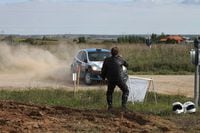
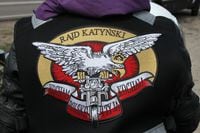
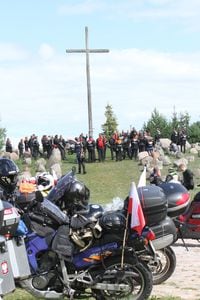

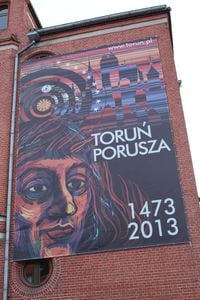

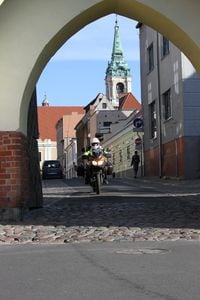
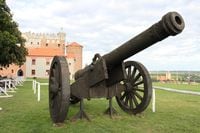

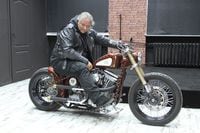

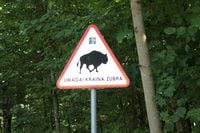
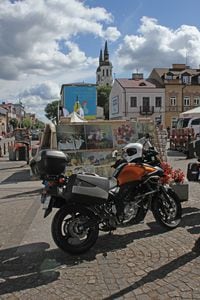

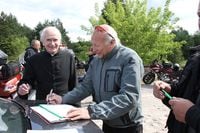
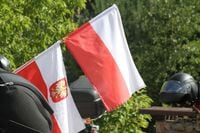

/cloudfront-us-east-1.images.arcpublishing.com/octane/FZXHNOQRNVA3BIDWAF46TSX6I4.jpg)
/cloudfront-us-east-1.images.arcpublishing.com/octane/JRSFLB2645FVNOQAZCKC5LNJY4.jpg)
/cloudfront-us-east-1.images.arcpublishing.com/octane/ITNLTIU5QZARHO733XP4EBTNVE.jpg)
/cloudfront-us-east-1.images.arcpublishing.com/octane/VZZXJQ6U3FESFPZCBVXKFSUG4A.jpg)
/cloudfront-us-east-1.images.arcpublishing.com/octane/QCZEPHQAMRHZPLHTDJBIJVWL3M.jpg)
/cloudfront-us-east-1.images.arcpublishing.com/octane/HXOUJXQWA5HBHGRO3EMJIGFMVI.jpg)

/cloudfront-us-east-1.images.arcpublishing.com/octane/3TIWWRV4JBBOLDVGRYECVVTA7Y.jpg)
/cloudfront-us-east-1.images.arcpublishing.com/octane/KIX5O23D5NAIBGFXBN3327DKZU.jpg)
/cloudfront-us-east-1.images.arcpublishing.com/octane/7GJYDUIPXRGMTMQKN6ONYOLBOU.jpg)
/cloudfront-us-east-1.images.arcpublishing.com/octane/MUQLOVLL2ZDGFH25ILABNBXKTI.jpg)
/cloudfront-us-east-1.images.arcpublishing.com/octane/TNOU5DNE2BC57MFPMGN2EIDXAM.jpg)
/cloudfront-us-east-1.images.arcpublishing.com/octane/GTCXACQGJ5HAPDTGWUQKDEH44E.jpg)
/cloudfront-us-east-1.images.arcpublishing.com/octane/S35YGSEMEZB4BLTDJTSZPF4GLA.jpg)
/cloudfront-us-east-1.images.arcpublishing.com/octane/5UOT6HPX2JFMRJAX6EH45AR4MQ.jpg)
/cloudfront-us-east-1.images.arcpublishing.com/octane/OKWOJWAKP5EP3OACCRRWPCIX2Q.jpg)
/cloudfront-us-east-1.images.arcpublishing.com/octane/2WF3SCE3NFBQXLDNJM7KMXA45E.jpg)
/cloudfront-us-east-1.images.arcpublishing.com/octane/G4MG6OUCJNBSHIS2MVVOTPX65E.jpg)
/cloudfront-us-east-1.images.arcpublishing.com/octane/IIGGWFOTOJGB7DB6DGBXCCMTDY.jpg)
/cloudfront-us-east-1.images.arcpublishing.com/octane/QSTCM6AVEZA5JJBUXNIQ3DSOF4.jpg)
/cloudfront-us-east-1.images.arcpublishing.com/octane/U4I7G625B5DMLF2DVIJDFZVV6M.jpg)
/cloudfront-us-east-1.images.arcpublishing.com/octane/B6XD6LS6IVCQPIU6HXDJSM3FHY.jpg)
/cloudfront-us-east-1.images.arcpublishing.com/octane/ICL63FEDDRDTTMINYICCEYGMDA.jpg)
/cloudfront-us-east-1.images.arcpublishing.com/octane/FCGZHQXRBZFLBAPC5SDIQLVF4I.jpg)